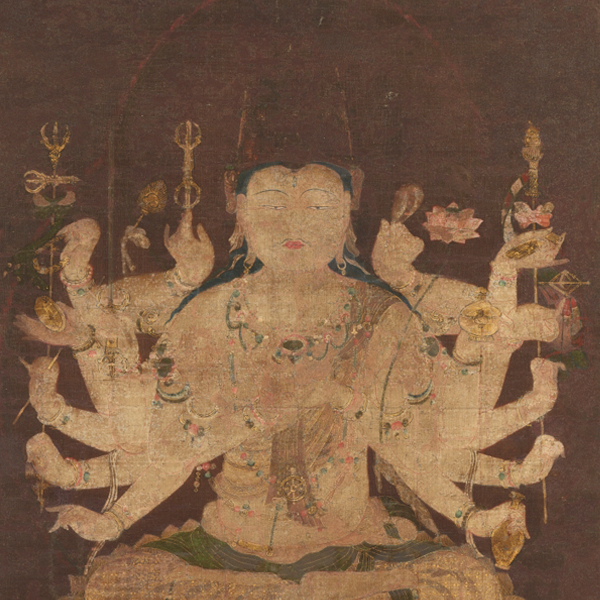The Arts of Buddhism | 8th–16th century
-

The Goddess Jundei Butsumo (detail)
Heian period, 12th century (Important Cultural Property)Japanese Gallery (Honkan) Room 3
July 8, 2025 (Tue) - August 17, 2025 (Sun)The beliefs and arts of Buddhism, along with its followers, became more diverse over time. In the Heian period (794–1192), the emperor and court nobility practiced and supported Buddhism. They used their vast wealth to build temples and create images for worship, often in delicate styles reflecting their tastes.
In the Kamakura period (1192–1333), the samurai gained political power, also becoming patrons of Buddhism. They preferred Buddhist art that was clear and dynamic, which led artisans to develop new styles. Many common people also became followers of Buddhism at this time, blending this religion with local beliefs, especially in the Muromachi period (1392–1573).
During these centuries, monks brought new schools of Buddhist thought from China, and developed new schools in Japan based on older teachings. Buddhism also became more integrated with Shinto, the indigenous religion. The paintings, sculptures, ritual tools, and sacred calligraphy on display illustrate this diversity in Buddhism.
| Designation | Name | Creation/ Excavation/ Provenance |
Period | Acquisition/ Ownership/ Accession Number |
CMT | ||
| Highlight | Important Cultural Property | The Goddess Jundei Butsumo | Heian period, 12th century | A-12449 | |||
| Highlight | Important Cultural Property | The Bodhisattva Hannya | Kamakura period, 13th century | A-12368 | |||
| The Wisdom King Fudō | Kamakura period, 14th century | A-1223 | |||||
| The Wisdom King Aizen | Nanbokuchō period, 14th century | A-768 | |||||
| Highlight | National Treasure | The God Zaō Gongen | Found on the Kinpu Mountain Range, Nara | Heian period, 1001 | Lent by Nishiarai Daishi Sōjiji Temple, Tokyo | ||
| Highlight | Part of the "Lotus Sutra" | Attributed to Sugawara no Michizane | Heian period, 9th century | Gift of Ms. Yanagisawa Keiso, B-3244 | |||
| Highlight | Important Cultural Property | The God Zaō Gongen | Found at the Mount Ōmine Peak Site, Nara | Heian period, 12th century | Lent by Ōminesanji Temple, Nara |
